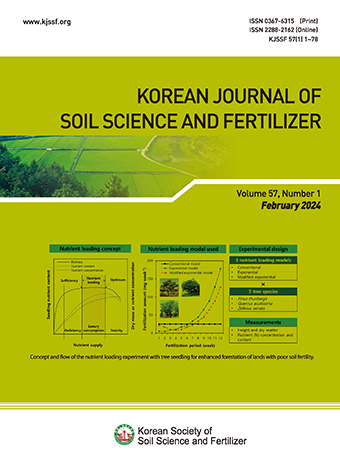Short communication
Abstract
References
Information
- Publisher :Korean Society of Soil Science and Fertilizer
- Publisher(Ko) :한국토양비료학회
- Journal Title :Korean Journal of Soil Science and Fertilizer
- Journal Title(Ko) :한국토양비료학회 학회지
- Volume : 53
- No :3
- Pages :366-374
- Received Date : 2020-07-10
- Revised Date : 2020-08-25
- Accepted Date : 2020-08-31
- DOI :https://doi.org/10.7745/KJSSF.2020.53.3.366




 Korean Journal of Soil Science and Fertilizer
Korean Journal of Soil Science and Fertilizer








